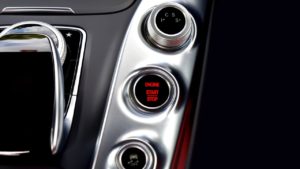
Demand for the electric cars has been on upward trend over the last few years. However, manufacturers and car owners still face a challenge due to the limited battery capacity which necessitates the need to keep on recharging after traveling a certain distance.
Despite the benefits of charging the electric cars at home, most residential installations, especially the older ones, may not support the systems. But the consumers can upgrade these to accommodate the additional load. The upgrade depends on the existing wiring, panel, capacity and charging station power requirements.
Factors to consider when installing charge stations at home
 Whether to upgrade or not depends on different factors such as the battery size, current electrical wiring and capacity, and the charger voltage and level. The electric car owner must first decide on the preferred type of charger and time, and then compare its power requirements with the existing capacity at home.
Whether to upgrade or not depends on different factors such as the battery size, current electrical wiring and capacity, and the charger voltage and level. The electric car owner must first decide on the preferred type of charger and time, and then compare its power requirements with the existing capacity at home.
Some chargers require 120V while others work on 240V and each takes different times to fully charge the batteries. Higher voltages will require dedicated circuits and upgraded wiring, breakers, panel and service entrance.
Other upgrades include the price plan, metering, and compatible outlets or provision for hard-wiring. If you are installing a smart charging station, you will require additional data network cables.
Charging levels and requirement
Depending on the type you plan to install, you need to realize that the more powerful models have shorter charging time compared to the smaller chargers, but may require costly upgrades. For this reason, it is essential to consider your current budget, time available to charge, as well as future charging needs.
Level 1 uses a 15 to 20 amp 120 volts circuit and may not require an upgrade. However, this is slow and takes between 12 and 24 hours to fully charge a standard electric car.
Level 2 is used for the fast charging of pure battery electric cars but often requires a panel upgrade and a dedicated 240-volts circuit. This reduces the charging time to between four and eight hours and is the most common of all the three levels.
DC charging is very fast; it uses about 400-volt direct current and is capable of reaching full charge in about 15 minutes. This is a complicated method and may require significant upgrades in the home electrical system. It is also very expensive and rarely used for home charging.
How to upgrade for a residential EV charge station
 With several chargers in the market, you should consult the experts for the right model, sizing, and upgrade requirements. Even if you decide to purchase the product directly from the sellers, you will still need to engage a qualified electrical contractor to upgrade your wiring or install the product if you system capacity can support it.
With several chargers in the market, you should consult the experts for the right model, sizing, and upgrade requirements. Even if you decide to purchase the product directly from the sellers, you will still need to engage a qualified electrical contractor to upgrade your wiring or install the product if you system capacity can support it.
It is essential to ensure that the electrical panel and dedicated circuit have the capacity to handle the system. The installation of the charging station is similar to other high power equipment, such as clothes dryer, and should comply with all the electrical codes and requirements.
Each charging station should be on its own dedicated circuit with adequate capacity and protection. However, the it can still be connected to an existing 40 Amp circuit, such as the one for the kitchen, provided that there is a locking mechanism to ensure that only one load is connected at a time.
Charge stations may be hardwired or plug-equipped to connect to the electrical outlet. For the plug type charger, you will need to have an electrician to wire the compatible electrical receptacle according to the codes.
You may add ventilation to improve the cooling of the charge station if it is in a location with poor air circulation.
Benefits of charging the electric cars at home
- Electricity is cheaper at night, hence, an opportunity to reduce the cost of charging the electric cars.
- You charge it during the night when the car is not in use, hence, not interfering with your daily activities.
- You can achieve more savings if you charge using the renewable power source, such as solar.
Conclusion
Charging electric cars at home is the desire of the majority of EV owners. It cuts down on the cost and time to drive and wait at a public charge station. In addition, it does not interfere with the daily activities of the electric car owners since they can charge at night.
Unfortunately, there are several homes without the provision or capacity to support the charging stations. However, the EV owners can consult the car dealers, and then engage qualified electricians in upgrading the existing electrical wiring. This will enable them to conveniently charge at home.

